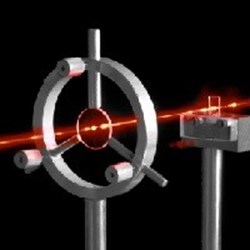Laser Institute Of America Revises Standard For Laser Safety

Updated for the first time in the seven years, the new American National Standard for Safe Use of Lasers will be available through the Laser Institute of America, secretariat of the Accredited Standards Committee (ASC) Z136, which develops the laser safety standards. The ANSI Z136.1 standard guides the safe use of lasers and laser systems by defining control measures for the seven laser hazard classifications.
According to Ben Rockwell, chairman of ASC Z136 Standards Subcommittee 1 (SSC-1), who has chaired LIA’s International Laser Safety Conference (ILSC) several times, highlights of the standard include:
- 19 new definitions of key terms, including administrative control measure, beam divergence, beam waist, saturable absorption and visible luminous transmission.
- A significant increase in allowed exposure levels for wavelengths between 1.2 micrometre (µm) and 1.4µm and a slight decrease in exposure limits for pulses shorter than approximately 10µs.
- An updated section on “special qualifications” for medical-related exposures to include MPEs expressed in terms of illuminance.
- Rearranged Section 4 (Control Measures) and rewritten Section 7 (Non-beam Hazards) to increase comprehension.
- Examples involving new exposure limits added to Appendix B.
- Vertical standards (Z136.2 through Z136.9) now take precedence over this document within the scope of those standards.
- The degradation of optics transmission in the ultraviolet (UV) and near-infrared (NIR) is now included in the analysis of hazard classification of lasers.
The ANSI Z136.1 standard is indispensable in creating a safe working environment where lasers are used. While it is a voluntary standard, it is a Laser Safety Officer’s (LSO’s) best friend and a vital insurance policy for companies.
To obtain the newly revised ANSI Z136.1 standard, visit LIA’s online store. For a limited time, the cost is reduced.
Source: The Laser Institute of America
